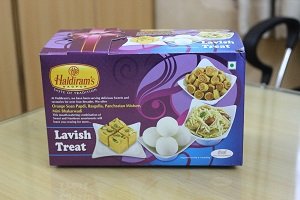Bobst has been part of the folder-gluer landscape for almost as long as it has been making machinery. Having launched its first folder-gluer in 1942, Bobst has a long history of innovation and spends a higher percentage of its turnover on research and development than any other company in its sector.
“For example, our recently launched Accucheck unit, which checks every single carton for print and surface defects, is built on high-speed video scanning technology that, on the face of it, is a far cry from folding and gluing a piece of cardboard,” explains Jacques Reymond, head of product marketing for Bobst sheetfed products, which include its folder-gluer lines.
Accucheck is designed to add 100% quality checking to folder-gluer lines such as Bobst’s Expertfold models, the latest version of which has been designed specifically with the needs of pharmaceutical packaging manufacturers in mind. “The new Expertfold 50 incorporates many of the innovations we have developed over recent years in a package designed to excel with smaller cartons,” adds Reymond.
He says that the Bobst approach to innovation leads to totally new machines, such as the Expertfold 50, but also means that improvements to existing, successful products are also developed.
Still in service
 With almost 130 years of history, Bobst has been at the forefront of innovation for decades. The year 1918 saw the development of the AV (Auto-Variable) to print and then inline diecut simple straight-line boxes, which was followed in 1940 by the Bobst AP 900, the world’s first automatic die-cutter and ancestor of all modern Autoplaten diecutters. Two years later Bobst launched the PCR 382, its first folder-gluer.
With almost 130 years of history, Bobst has been at the forefront of innovation for decades. The year 1918 saw the development of the AV (Auto-Variable) to print and then inline diecut simple straight-line boxes, which was followed in 1940 by the Bobst AP 900, the world’s first automatic die-cutter and ancestor of all modern Autoplaten diecutters. Two years later Bobst launched the PCR 382, its first folder-gluer.
Amazingly, there are still PCR 382 lines from the 1940s in service around the world. The oldest that Bobst knows of is a 1944 model, which is still being used to produce carton board packaging by a company in Bulgaria.
Step change
The 1960s saw the development of Bobst machines such as the PCR880 and 930, which offered longer folding sections and 4- and 6-corner box making, respectively. Around the same time, specialist folder-gluer lines were developed for the pharmaceutical packaging industry such as the Baby 20 and the Farma. The year 1972 saw Bobst launch the Domino, which Reymond says was a step change in folder-gluer design. The 1970s also saw the first Bobst folder-gluer specifically designed for corrugated use.
It was the Domino platform that saw the launch of the first truly modular foldergluer in the Domino II, which became the launch pad for a number of further innovations which included, in 1993, Accufeed. Originally designed to help blank feeding on corrugated folder-gluers, Accufeed cut the amount of time needed to set the feeding of boxes in half while also integrating a blank aligner which ensured the consistent alignment of blanks that is necessary for high quality folding. Accufeed has become standard equipment on most Bobst folder-gluers, including today’s Expertfold 50.
Maximizing productivity
Not every Bobst innovation is built into the line itself. Many are peripherals that can be added to maximize the productivity potential of the folder-gluer, improve quality, or simply to make life more pleasant for operatives. “As folder-gluers became faster in the 1980’s, we realized that operators were struggling to get blanks into them and folded and glued cartons out,” recalls Reymond.
So, what of the latest Bobst folder-gluer lines—Masterfold, Expertfold, Visionfold and Ambition? “Each addresses a different market from those that need the very highest productivity to those that need a small, versatile machine that can help them break into carton making or serve a specific niche,” says Reymond. “With Masterfold, for example, we took the spirit of Alpina and found a way to create a new machine that was even more productive by further reducing make-ready times and introducing faster ways to process cartons. Masterfold can run 4- and 6-corner boxes at up to 50,000 an hour depending on the flap size, while for crash-locks the only real limitations are the ability to feed and pack.” The first new approach to crash-lock production in fifty years, Speedwave, removed the need for folding hooks. “Setting is simpler and quicker than hook systems,” explains Reymond. “You can more easily run complex cartons, like those with apertures and windows, and you can run them more quickly. It is also more tolerant of board variation than hook systems.” The system is now in its second generation—Speedwave GT—and Reymond says that Bobst’s R&D teams are continuing to innovate as they always have. “We won’t be changing that any time soon!”










